Semantic Encoding
Encoding Semantic Aspects
Dates
Names
We use type="person" for the proper names of individual people, as in <name type="person">Eartha M.M. White</name>. We do the same to mark up a pronoun, common noun or phrase that refer to a specific, identifiable person, as in <name type="person">she</name> or <name type="person">the Mission's founder</name>, when those formulations refer to White. We use type="person_group" to mark up a proper noun indicating the name of a group of people that has a particular name, such as the <name type="person_gro up">Seminole</name> and <name type="person_group">Creek</name> and the <name type="person_group">British</name> and <name type="person_group">French</name>. We also use <name type="company"> and <name type="organization">, as appropriate. As with individual people, we would also use <name type="person_group">, <name type="company"> and <name type="organization"> to mark up a generic word or phrase that refers to a previously mentioned or otherwise identifiable group, company or organization, respectively.
We use type="place" to mark up the proper names of places of any type, including buildings, streets, cities, states (and other political divisions), as well as geographical features like rivers, lakes, etc. To indicate the category, we employ the subtype attribute, as in the following examples: <name type="place" subtype="city">Jacksonville</name>, <name type="place" subtype="river">St. John's River</name>, and <name type="place" subtype="building">City Hall</name>. We do the same with common nouns or phrases that refer to specific, identifiable places, as in she loved <name type="place" subtype="city">her city</name> more than anything, the level of the <name type="place" subtype="river">river</name> was rising, and we went <name type="place" subtype="building">next door</name>. We regard addresses as a type of name that designates a place: <name type="place" subtype="address">123 Main Street</name>. For places that can be located on a map, we include latitude and longitude as follows: <name type="place" subtype="building">The Clara White Mission<location><geo>30.332632 -81.664020</geo></location></name>. We obtain this information from Google Maps.
We use <name type="event"> to mark up the name of an organized event, such as <name type="event">The World's Fair</name>.
Titles of Written Works
We have used <title level="m"> to mark up words that are used as themselves.
